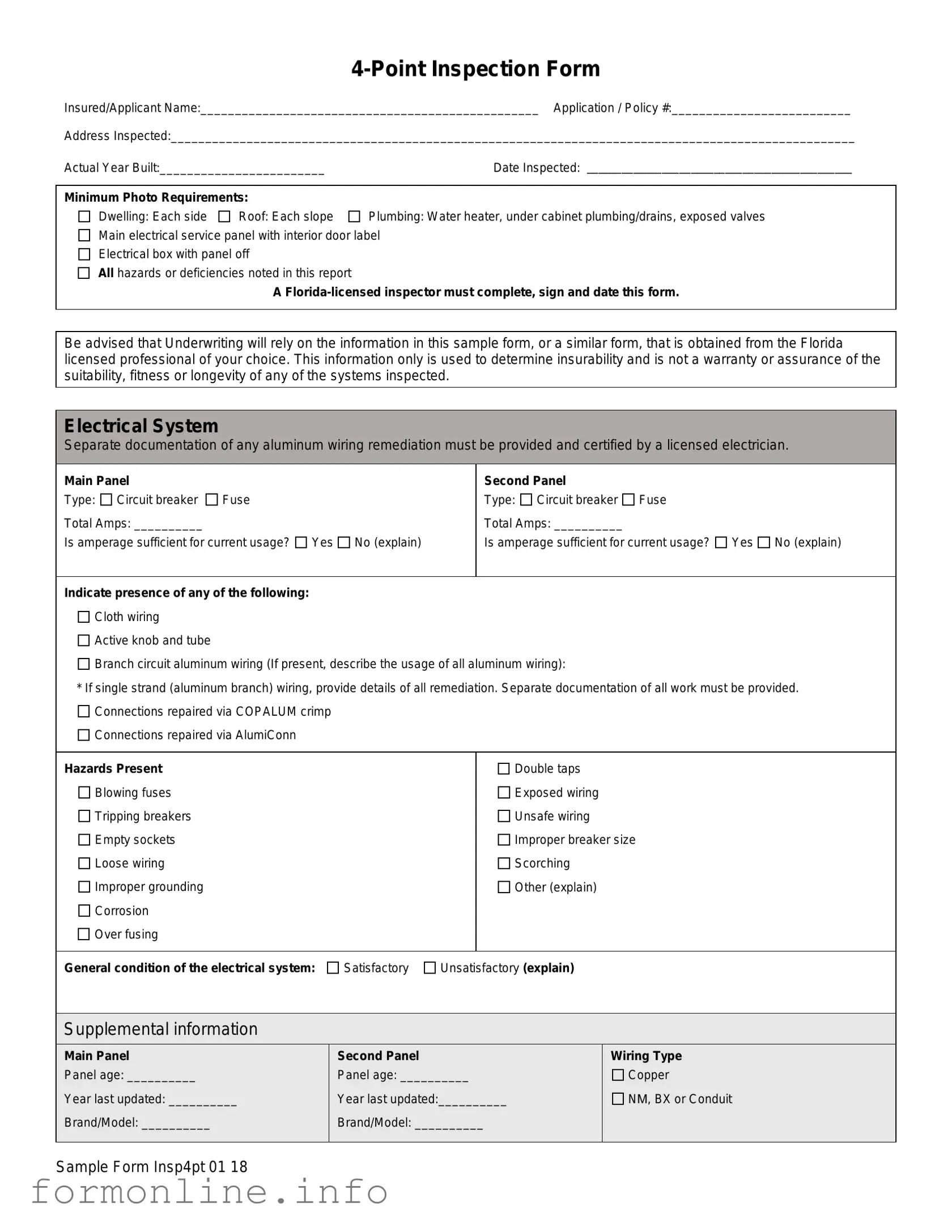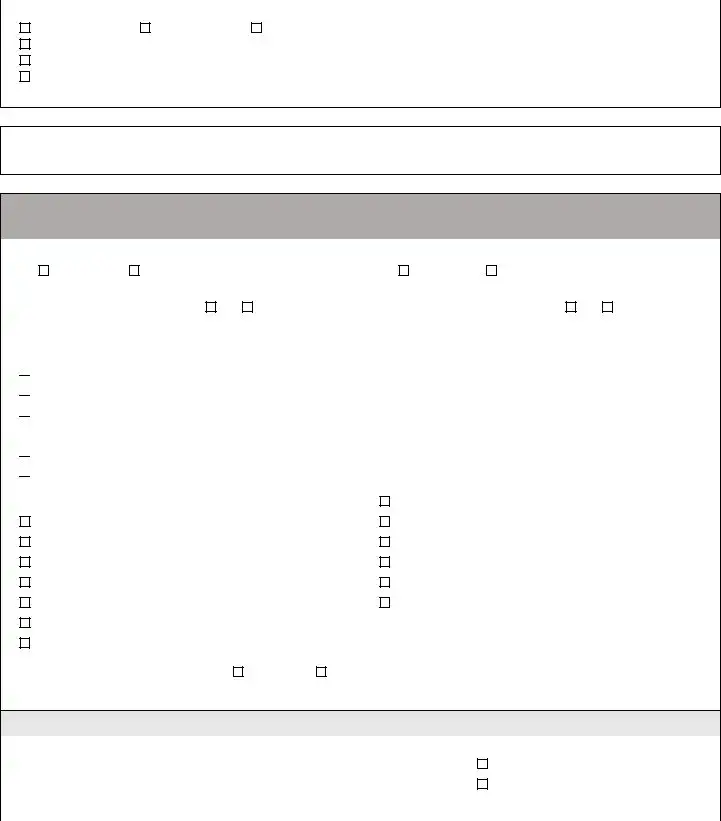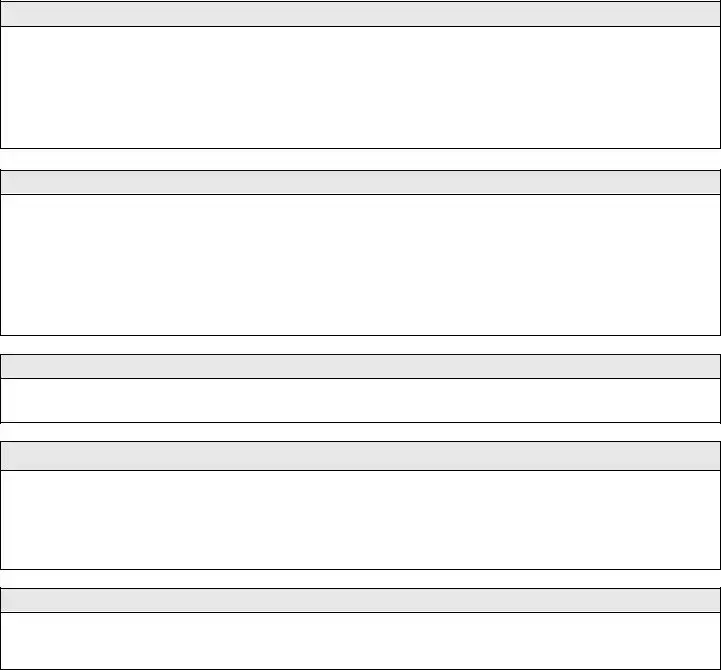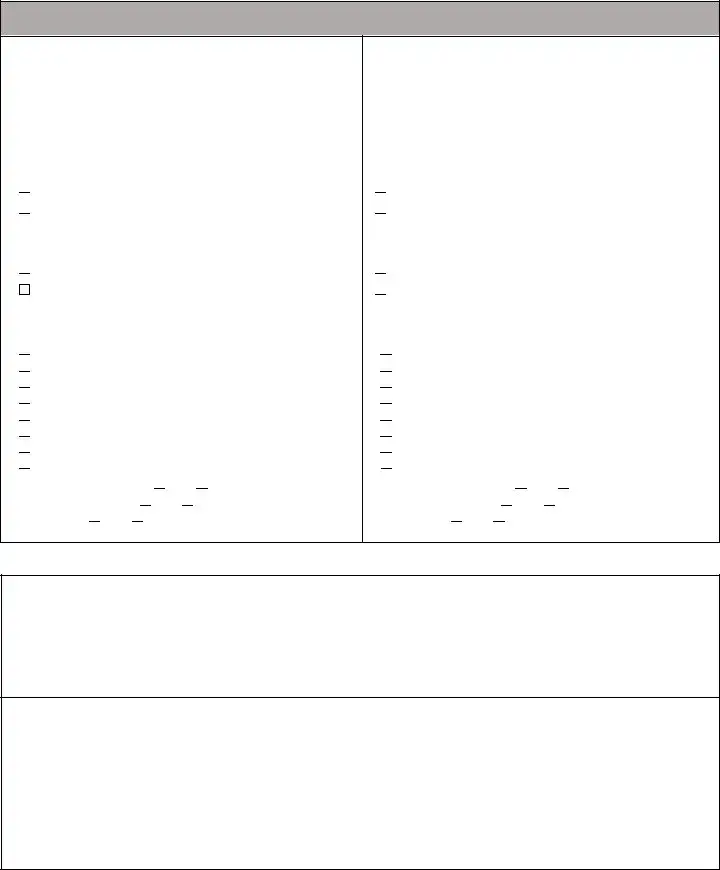The 4-Point Inspection form is similar to a Home Inspection Report. Both documents assess the condition of a home, focusing on critical systems like plumbing, electrical, roofing, and HVAC. A Home Inspection Report often provides a more comprehensive overview, including additional details about structural integrity and safety features. Like the 4-Point Inspection, it requires a licensed inspector to ensure that the findings are credible and reliable for potential buyers or insurers.
Another document akin to the 4-Point Inspection form is the Roof Inspection Report. This report specifically evaluates the roof's condition, age, and potential issues. While the 4-Point Inspection includes roof assessment as part of a broader evaluation, the Roof Inspection Report focuses solely on roofing materials, installation quality, and signs of wear or damage. Both documents aim to provide a clear understanding of the roof's health and any necessary repairs.
The Electrical Inspection Report shares similarities with the 4-Point Inspection form in that it examines the electrical systems of a property. This report typically includes details about wiring, panel conditions, and safety hazards. While the 4-Point Inspection provides a snapshot of the electrical system as part of a larger evaluation, the Electrical Inspection Report delves deeper into code compliance and potential risks, making it essential for ensuring safety in a home.
Additionally, the HVAC Inspection Report is comparable to the 4-Point Inspection form. Both documents assess heating, ventilation, and air conditioning systems for functionality and safety. The HVAC Inspection Report, however, often includes more detailed information about system efficiency, maintenance history, and potential upgrades. While the 4-Point Inspection checks for basic operational status, the HVAC Report may provide recommendations for improvements or repairs.
The Plumbing Inspection Report is another document that aligns closely with the 4-Point Inspection form. This report focuses on the plumbing system, detailing the condition of pipes, fixtures, and water supply systems. While the 4-Point Inspection provides a general overview of plumbing conditions, the Plumbing Inspection Report goes further by identifying specific issues, such as leaks or outdated materials, which may require immediate attention.
A Property Condition Assessment (PCA) is also similar to the 4-Point Inspection form. A PCA evaluates the overall condition of a property, including structural, mechanical, and electrical systems. While the 4-Point Inspection targets specific systems for insurance purposes, a PCA offers a broader perspective, often used in commercial real estate transactions to inform potential buyers about the property's condition and any required repairs.
The Insurance Underwriting Inspection Report shares commonalities with the 4-Point Inspection form. This report is used by insurance companies to assess risk factors associated with a property. Like the 4-Point Inspection, it evaluates essential systems and identifies hazards. However, the Insurance Underwriting Inspection Report may also include additional factors like neighborhood conditions and historical claims data, providing a more comprehensive risk assessment for insurers.
For individuals looking to buy or sell an RV, understanding the importance of proper documentation is essential; one vital document in this process is the RV Bill of Sale, which can be obtained from sites like https://georgiapdf.com. This form serves not only as proof of ownership transfer but also ensures both parties have a clear record of the transaction details, preventing future disputes and facilitating a smoother transition between the buyer and seller.
Finally, the Appraisal Report may also be seen as similar to the 4-Point Inspection form. While primarily focused on determining property value, an Appraisal Report often includes evaluations of the property's condition, including major systems. Both documents require a qualified professional to ensure accuracy, though the Appraisal Report emphasizes market value and comparables, whereas the 4-Point Inspection is more concerned with the operational status of the home's critical systems.



 Cloth wiring
Cloth wiring
 Active knob and tube
Active knob and tube
 Branch circuit aluminum wiring (If present, describe the usage of all aluminum wiring):
Branch circuit aluminum wiring (If present, describe the usage of all aluminum wiring):
 Connections repaired via COPALUM crimp
Connections repaired via COPALUM crimp 
 Connections repaired via AlumiConn
Connections repaired via AlumiConn

 Yes
Yes 
 No
No

 Full replacement
Full replacement 
 Partial replacement
Partial replacement
 Satisfactory
Satisfactory
 Cracking
Cracking
 Cupping/curling
Cupping/curling
 Excessive granule loss
Excessive granule loss
 Exposed asphalt
Exposed asphalt
 Exposed felt
Exposed felt
 Missing/loose/cracked tabs or tiles
Missing/loose/cracked tabs or tiles
 Soft spots in decking
Soft spots in decking 
 Visible hail damage
Visible hail damage


 Yes
Yes  No
No
 Yes
Yes 
 No
No
 Full replacement
Full replacement 
 Partial replacement
Partial replacement Satisfactory
Satisfactory Unsatisfactory
Unsatisfactory 
 Cracking
Cracking
 Cupping/curling
Cupping/curling
 Excessive granule loss
Excessive granule loss
 Exposed asphalt
Exposed asphalt
 Exposed felt
Exposed felt
 Missing/loose/cracked tabs or tiles
Missing/loose/cracked tabs or tiles
 Soft spots in decking
Soft spots in decking 
 Visible hail damage
Visible hail damage


 Yes
Yes  No
No
 Yes
Yes 
 No
No